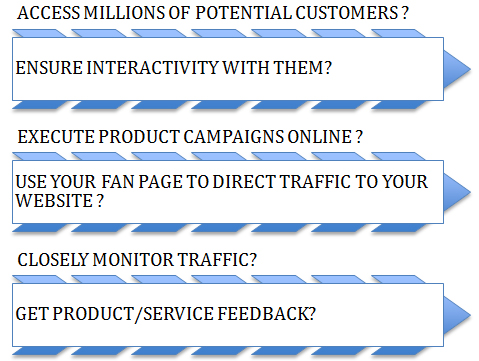DO YOU WANT TO:

If your answer to the above questions is YES, Facebook Marketing is the need of the hour for your business!
With multiple options such as Facebook Business Pages, Facebook Advertising & Facebook Places, you could give your business a significant online advantage!
The Ethical SEO Advantage
To fully exploit the power of Facebook, is not just to increase likes on your business’facebook page but to engage audiences & drive two way communication with them. This is a task best left
to experts. At Ethical SEO Services, a renowned Facebook Marketing Company, India, our cross functional team of social media experts with rich domain experience helps you:
- Develop an engaging facebook page
- Effective management of the page
- Develop & execute focused facebook advertising campaigns
- Real time analytics to check campaign effectiveness
Our Facebook campaign management is characterized by three phases that are handled with equal dexterity:

The Planning stage involves detailed:
- Study of the target audience
- Media planning to reach the target audience
- Freeze campaign budgets & schedules
At the Implementation Stage the following parameters are involved:
- Develop engaging ads
- Executing Campaigns
- Monitoring & tracking campaigns
At the analysis stage, the following variables are tracked:
- Identification of which ads are performing & which are not
- Detailed analysis of conversion, cost of acquisition etc
When you partner with Ethical SEO’s Facebook Marketing Services you are ensuring that your brand reaches its fullest potential!






